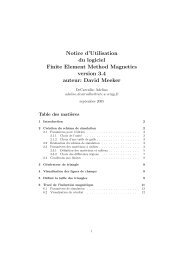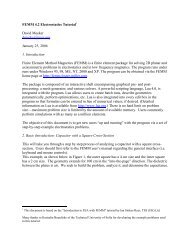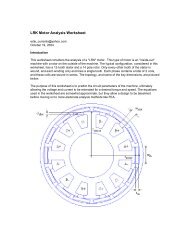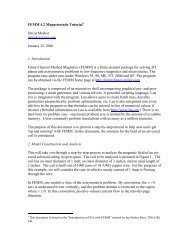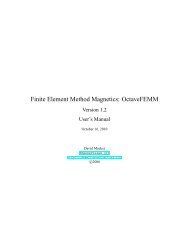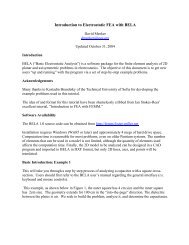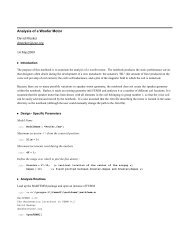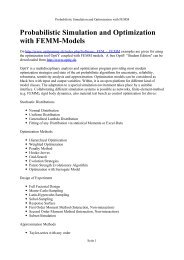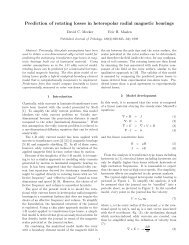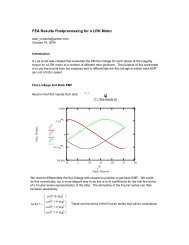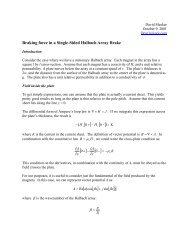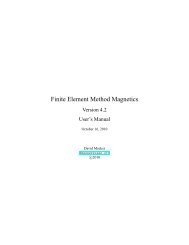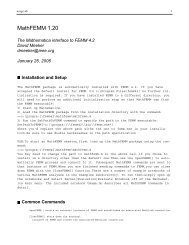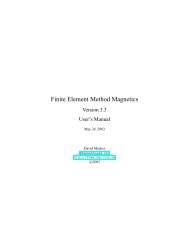1 Introduction - Finite Element Method Magnetics
1 Introduction - Finite Element Method Magnetics
1 Introduction - Finite Element Method Magnetics
You also want an ePaper? Increase the reach of your titles
YUMPU automatically turns print PDFs into web optimized ePapers that Google loves.
2 Overview<br />
The goal of this section is to give the user a brief description of the problems that FEMM solves.<br />
This information is not really crucial if you are not particularly interested in the approach that<br />
FEMM takes to formulating the problems. You can skip most of Overview, but take a look at<br />
Section 2.2. This section contains some important pointers about assigning enough boundary<br />
conditions to get a solvable problem.<br />
Some familiarity with magnetism and Maxwell’s equations is assumed, since a review of this<br />
material is beyond the scope of this manual. However, the author has found several references that<br />
have proved useful in understanding the derivation and solution of Maxwell’s equations in various<br />
situations. A very good introductory-level text is Plonus’s Applied electromagnetics [1]. A good<br />
intermediate-level review of Maxwell’s equations, as well as a useful analogy of magnetism to<br />
similar problems in other disciplines is contained in Hoole’s Computer-aided analysis and design<br />
of electromagnetic devices [2]. For an advanced treatment, the reader has no recourse but to refer<br />
to Jackson’s Classical electrodynamics [3].<br />
2.1 Relevant Maxwell’s Equations<br />
For the low-frequency problems addressed by FEMM, only a subset of Maxwell’s equations are required.<br />
By definition, low-frequency problems are those problems in which displacement currents<br />
can be ignored. Displacement currents are typically relevant only at radio frequencies.<br />
2.1.1 Magnetostatic Problems<br />
Magnetostatic problems are problems in which the fields are time-invariant. In this case, the field<br />
intensity (H) and flux density (B) must obey:<br />
∇ × H = J (1)<br />
∇ · B = 0 (2)<br />
subject to a constitutive relationship between B and H for each material:<br />
B = µH (3)<br />
If a material is nonlinear (e.g. saturating iron or alnico magnets), the permeability, µ is actually a<br />
function of B:<br />
µ= B<br />
H(B)<br />
(4)<br />
FEMM goes about finding a field that satisfies (1)-(3) via a magnetic vector potential approach.<br />
Flux density is written in terms of the vector potential, A, as:<br />
B = ∇ × A (5)<br />
Now, this definition of B always satisfies (2). Then, (1) can be rewritten as:<br />
<br />
1<br />
∇ × ∇ × A = J (6)<br />
µ(B)<br />
6



